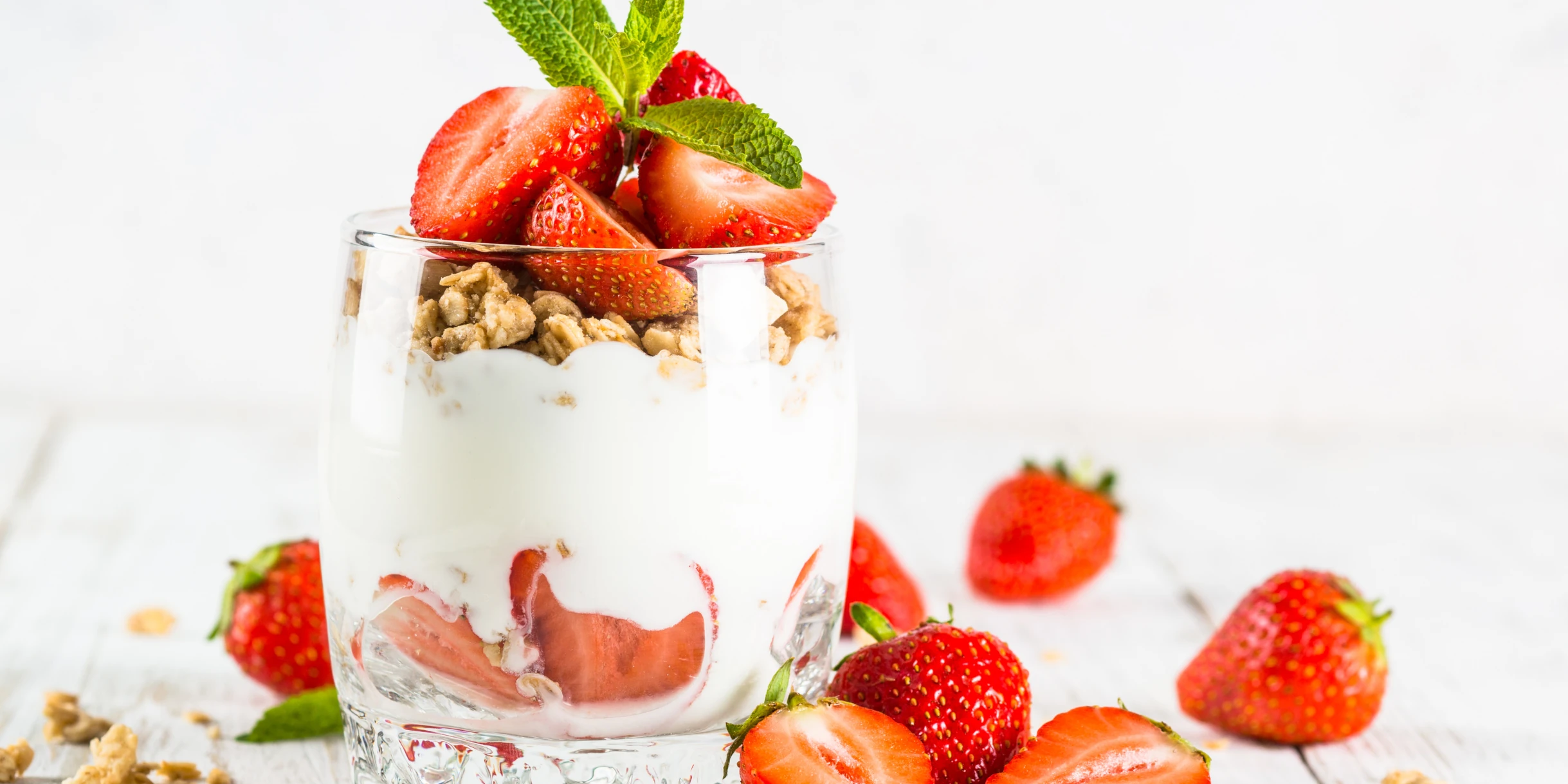


Registered Nutritional Therapist & Author
BA Hons, mBANT, AFMCP
If you are already into the gut health game you
may already be familiar with probiotics. You may also be clued up on
prebiotics. However ‘synbiotics’ are much lesser known as they are a relatively
recent concept. So what are these new kids on the gut health block? Are these
beneficial for our gut health? And could they be the new frontier in probiotic
supplements?
Before we get into the concept of synbiotics it is important that we ensure we fully understand the difference between probiotics and prebiotics as often they can be easily confused and incorrectly interchanged. Firstly, probiotics can be found in supplements as well as in fermented foods such as sauerkraut, kimchi, kefir and natural yogurt. These contain sources of bacteria and yeasts that we believe to be beneficial to our gut health and when we consume said foods and supplements the idea is we ingest microbes that add good bugs to our gut. Prebiotics, on the other hand, refer to specific types of fibre compounds which can be found abundantly in foods including garlic, onions, leeks and asparagus to name a few. These have a potent feeding effect on our existing gut microbes enabling them to proliferate and thrive. So to put it simply the key difference between the two is that probiotics are a means to adding in beneficial microbes whereas prebiotics have a feeding action. So whilst they only have one vowel that separates the two they actually have very different actions. Got it?
Newer into the gut health lexicon are ‘synbiotics’ which can be best described as a blend of both prebiotics and probiotics where the prebiotics selectively favour the probiotic organisms. In other words they are specifically designed to include prebiotics that feed the particular strains of microbes in a given formula or food. Proponents of synbiotics suggest that this more strategic partnership can help to combat some of the challenges that have been highlighted with probiotics, most notably the rate of survivability of the organisms to reach the large intestine. The premise being that synbiotics may improve colonisation and as such staying power of probiotics in the gut as well as having a direct stimulating effect on their growth. Of course we also need to highlight that this is only really possible when we have a healthy gut terrain. After all this is essential to supporting a flourishing gut ecosystem which is why gut health barrier integrity is so vitally important. ION* can help to nourish this on a more fundamental and foundational level to enable the synbiotics to survive and thrive.
So where do we find synbiotics?
Well, we can actually see synbiotics occurring naturally in certain foods such as yogurt for example – the lactose in the milk feeds lactobacillus species of bugs that then ferment to create yogurt. Likewise this is what happens to create a sourdough culture as the yeast and bacteria feed off the carbohydrate in the grain in order to multiply. The probiotics are largely destroyed in the cooking process of sourdough but many of the organic acids and certainly the prebiotic element is very much in tact. We can also make our own synbiotic meals through deliberate food combining which could be sourdough with some traditional cheese like an aged cheddar for example. If we add a spoonful of kimchi we’ve got even extra synbiotic (and taste) benefits.
In terms of taking synbiotics in a supplement form it is really important to ensure that the supplement has legit credentials and clinical trials to back up its claims and that it contains sufficient amounts of probiotic CFU’s (colony forming units). Most credible supplements contain at least 1 billion and with prebiotics the dosage is generally around the 500-1,500mg mark. Obviously different supplements will have different dosages depending on their formula but this can give you an approximate guide.
It is also worth noting as a final point that whilst the rationale behind synbiotics seems sound, the actual clinical data and research is fairly limited at this point so we still have a long way to substantiate the various claims of synbiotics. And remember, to support any burgeoning and symbiotic (yes I mean symbiotic) ecosystem we need healthy foundations and this is very much true for our own inner microbial world.
REFERENCES
Pandey KR, Nail SR & Vakil BV (2015) ‘Probiotics, prebiotics and synbiotics- a review’ J Food Sci Technol 2015 Dec; 52(12): 7577–7587. Available online at https://www.ncbi.nlm.nih.gov/pmc/articles/PMC4648921/
Kola S & Gibson, GR (2011) ‘Synbiotics in health and disease’ Annu Rev Food Sci Technol. 2011;2:373-93. doi: 10.1146/annurev-food-022510-133739. Available online at https://pubmed.ncbi.nlm.nih.gov/22129388/
Yadav MK et al (2022) ‘Probiotics, prebiotics and synbiotics: Safe options for next-generation therapeutics’ Apple Microbiol Biotechnol. 2022 Jan;106(2):505-521. doi: 10.1007/s00253-021-11646-8. Epub 2022 Jan 11. Available online at https://pubmed.ncbi.nlm.nih.gov/35015145/
Tommaso ND, Gasbarrini A & Ponziani FR (2021) ‘Intestinal Barrier in Human Health and Disease’ Int J Environ Res Public Health. 2021 Dec 6;18(23):12836. doi: 10.3390/ijerph182312836. Available online at https://pubmed.ncbi.nlm.nih.gov/34886561/
Wells JM et al (2017) ‘Homeostasis of the gut barrier and potential biomarkers’ Am J Physiol Gastrointest Liver Physiol. 2017 Mar 1;312(3):G171-G193. doi: 10.1152/ajpgi.00048.2015. Epub 2016 Dec 1. Available online at https://pubmed.ncbi.nlm.nih.gov/27908847/
Leeuwendaal NK, Stanton C, O’Toole PW, Beresford TP (2022) ‘Fermented Foods, Health and the Gut Microbiome’ Nutrients. 2022 Apr 6;14(7):1527. doi: 10.3390/nu14071527. (Online). Available online at https://pubmed.ncbi.nlm.nih.gov/35406140/
Holscher H (2017) ‘Dietary fiber and prebiotics and the gastrointestinal microbiota’ Gut Microbes. 2017 Mar 4;8(2):172-184. doi: 10.1080/19490976.2017.1290756. Epub 2017 Feb 6. (Online). Available at https://pubmed.ncbi.nlm.nih.gov/28165863/
Wilkins T & Sequoia (2017) ‘Probiotics for Gastrointestinal Conditions: A Summary of the Evidence’ Am Fam Physician. 2017 Aug 1;96(3):170-178. Available online at https://pubmed.ncbi.nlm.nih.gov/28762696/
Kok CR & Hutkins R (2018) ‘Yogurt and other fermented foods as sources of health-promoting bacteria’ Nutr Rev. 2018 Dec 1;76(Suppl 1):4-15. doi: 10.1093/nutrit/nuy056. Available online at https://pubmed.ncbi.nlm.nih.gov/30452699/
Lau SW et al (2021) ‘Sourdough Microbiome
Comparison and Benefits’ Microorganisms. 2021 Jun 23;9(7):1355. doi: 10.3390/microorganisms9071355. Available online at https://pubmed.ncbi.nlm.nih.gov/34201420/
Accepting payments via


YourHealthBasket © 2025
detoxpeople Ltd
Registered in England & Wales 07156741
VAT reg GB 103 3641 60
Our new practitioner portal has been released and it’s now easier than ever to link a client’s account and provide them with suggestions using our new protocol system.
Convert your current cart into a protocol which can then be assigned to a linked client.